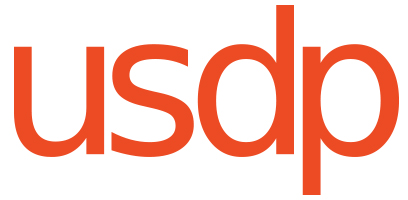LinkedIn ads are an attractive option for many B2B companies thanks to their ability to cut through the clutter of the algorithm to reach the right audience. However, most people don’t realize that, within the LinkedIn advertising platform, there are many different LinkedIn ad types, each with their own best practices and use cases.
Lets outline what these LinkedIn Ad types are and help you identify which is best for you:
Sponsored Content
Sponsored content ads are probably the first thing that comes to mind when you think about LinkedIn ads. These are the media-rich ads that appear directly in the feeds of a target audience. These ads run on desktop, tablet, and mobile, and they are designed to seamlessly fit into the LinkedIn feed.
Formats:
- Single image ads
- Video ads
- Carousel ads
- Event Ads
- (can be tied to a LinkedIn Event page as a part of an Event Ad campaign)
- Document ads
- Thought leader ads
Best Practices:
- Repurpose content from blog, website, and social media channels
- Include 4-5 ads in each campaign
- Use rich media elements (video, audio, etc.)
- Develop an emotional connection by sharing human interest stories
- Add your insights to show off your brand's thought leadership vs just sharing trending news
Sponsored Messaging
If you are at all active on LinkedIn, you have probably been sent a Sponsored Messaging Ad before. These are the ads that look like direct messages and are sent to targeted users when they are actually active on the platform to prevent getting lost in the feed. These ads can include CTA buttons or links to external sites to give viewers a clear next step.
Use Case:
These ads are best if you are trying to generate leads and start more interactive conversations with your audience.
Formats:
- Message ads
- Conversation ads
- Deliver an interactive, chat-like experience
- Highly targeted and designed to be read by users when they're active on LinkedIn, so your ad doesn't get lost in the feed
Best Practices:
- Share blog posts, webinars, or industry trends/analysis
- Promote product demos, tutorials, and success stories
- Better for retargeting, not cold outreach
- Choose your sender wisely – make sure they match the message
- Personalize based on audience segments
Dynamic Ads
Dynamic ads allow you to cut through the noise and reach your target audience in a personal and eye-catching way. They pull information from the target’s profile to create a unique ad that is different for each viewer. For example, if you are ever scrolling through LinkedIn and you notice a callout with your name and profile picture promoting an MBA program, that is a dynamic ad.
Use Case:
These ads work well for recruiting campaigns and other instances where your offering is relevant to your buyers on an individual level.
Formats:
- Dynamic LinkedIn follower ads
- Spotlight ad
Best Practices:
- Be as descriptive as possible in the main ad headline and text
- Test image layouts in advance of posting
- Include one clear message and CTA in each ad
Thought Leader Ads
Thought leader ads give companies the opportunity to share knowledge, showcase their team’s expertise, and give their brands a human face. These ads have been trending recently because of their ability to bring authenticity and approachability to a brand—a key to standing out on a platform dominated by AI and automation.
Use Cases:
These ads are wonderful for targeting prospects that already know who you are.
Formats:
- Try video content featuring team members
- For cold audiences: have your leadership team share what your company's all about
Best Practices:
- Use someone specific to be the face of the brand & humanize
- NOT great for smaller business just starting with LinkedIn ads
- Limited to the most recent 6 months of posts
- Dependent on profile attachment
- Need to keep in mind because if the individual leaves the company or detaches, the ads become unusable
Text Ads
Text ads are self-service, pay-per-click ads that show on LinkedIns’ desktop view desktop. They appear in small tiles on the right side of the LinkedIn interface, similar to display advertisements on a news website. While they are certainly simple, they can help you to grow your reach beyond your organic audience in a cost-effective way.
Use Case:
With CPMs 60-80% lower than other ad types, text ads are a cheap way to drive brand awareness. They are also helpful for testing different messages quickly.
Best Practices:
- Include a visual
- Use a profile image instead of an object or logo, when possible
- Use a variety of content: your YouTube, guides, etc.
- Use them to boost your main feed ads' performance
Carousel Ads
Similar to carousel posts, carousel ads give you the ability to feature multiple images to send a longer message in a compelling way. When done well, they can also drive longer engagements with viewers, as they will lead your audience to linger and click through each of the cards.
Use Case:
These ads are helpful for driving brand awareness if you can easily create batches of images to use.
Best Practices:
- Start with 3-5 cards
- Test expanding to more cards later
- Carousel content should speak to a similar theme or break down a large piece of content into carousel cards
- Use visual storytelling
- Each card description should include a CTA
Choosing the right type for you
Hopefully this expanded your horizons about what is possible on the LinkedIn Ads platform. If any of these ad types piqued your interest, check out our LinkedIn Ads checklist to quickly determine if LinkedIn is the right advertising platform for your company. If so, see our pricing guide to learn more about how to build your budget.

